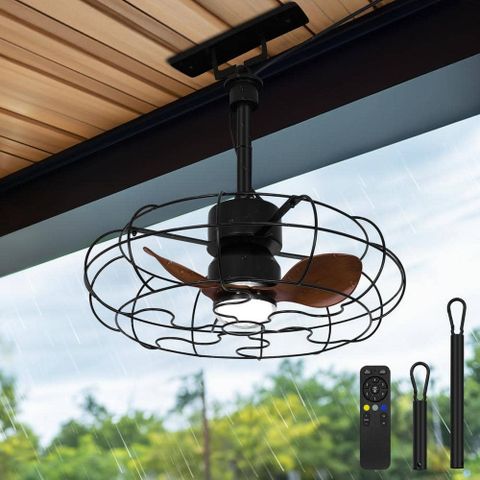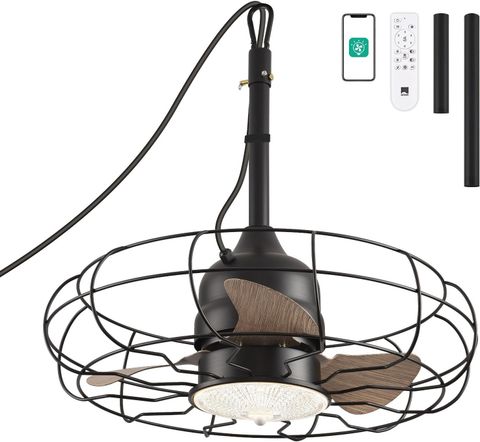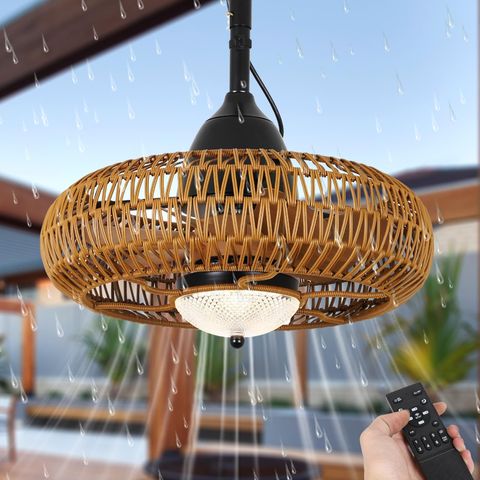Picture this: you’re sitting in your cozy outdoor gazebo, feeling the gentle breeze and enjoying the warmth of the sun. The perfect evening is unfolding, but something’s missing. You’re feeling a bit too hot, maybe even a little uncomfortable. What if I told you there’s a simple solution that could transform your outdoor experience? It’s not just about comfort – it’s about creating the right atmosphere for your outdoor living space.
When it comes to outdoor living spaces, few things can enhance the experience quite like the right ceiling fan. If you’ve got a gazebo tucked away in your backyard or nestled among the trees, you know how important it is to feel comfortable while relaxing outside. But choosing the correct fan for your particular setup isn’t always straightforward. There are so many factors to consider, from weather resistance to size and style. This guide will walk you through everything you need to know to pick the perfect ceiling fan for your outdoor gazebo space.
Understanding Outdoor Fan Requirements
Outdoor ceiling fans face a completely different set of challenges than their indoor counterparts. They must withstand rain, wind, humidity, and temperature fluctuations. Think about it – while your indoor fan might just deal with dust and regular use, an outdoor fan needs to handle the elements every single day. The materials matter enormously here. You want something that won’t rust or deteriorate quickly. Aluminum and stainless steel are often better choices than wood or plastic components. Consider the fan’s IP rating – this tells you how well it protects against water and dust. For gazebos, look for fans rated IP44 or higher. That means they can handle splashes and light moisture. A fan that’s properly rated will last much longer and provide better value over time. Many people underestimate the importance of weatherproofing, but it’s one of the most critical aspects of outdoor fan selection.
Size and Blade Span Considerations
The size of your gazebo directly impacts the fan size you’ll need. A small, intimate gazebo might only need a 36-inch fan, while a large open-air structure may require a 52-inch or even larger model. But it’s not just about diameter. You also need to think about blade span and airflow. The blade span refers to how far the blades extend from the center. Bigger fans generally move more air, but they also require more powerful motors. In smaller gazebos, you don’t want a fan that’s too big and overwhelming. It should feel proportionate to the space. Consider the height of your gazebo too. Most outdoor fans work best when they’re installed at least 8 feet above the ground. If your gazebo has lower ceilings, you might need a flush mount or low-profile option. A good rule of thumb is to measure your space carefully before making any purchases. Sometimes people assume they need a bigger fan than they actually do. Remember, it’s better to err on the side of caution and choose a slightly smaller fan rather than one that overwhelms the area.
Motor Quality and Performance
The motor is essentially the heart of any ceiling fan. For outdoor use, you definitely want a high-quality motor that can handle continuous operation. Look for fans with DC motors instead of AC motors when possible. DC motors offer several advantages including better energy efficiency and more precise speed control. They also tend to run quieter and last longer. Many outdoor fans come with multi-speed settings, which give you flexibility depending on conditions. Some fans even feature remote controls or smart home integration capabilities. These features can really enhance your outdoor experience. Imagine being able to adjust the fan speed from inside your house or setting it to turn on automatically when temperatures rise. Quality motors also mean less maintenance over time. A poorly built motor might start making strange noises after a few months or even break down entirely. Investing in a fan with a solid motor pays off in the long run. Check warranty information carefully – a good manufacturer will back their motors with extended warranties.
Weather Resistance Features
Let’s talk about what makes a fan truly suitable for outdoor environments. The first thing to consider is the finish. You’ll want a fan with a finish designed specifically for outdoor use. Look for powder-coated finishes that resist fading, chipping, and corrosion. Some fans have special coatings that protect against salt spray if you’re near the ocean. The blades themselves are another important consideration. They should be made from materials that won’t warp, crack, or fade in sunlight. Many manufacturers now offer blades made from aluminum, composite materials, or specially treated wood. Water resistance is crucial. Even if you don’t expect heavy rainfall, small amounts of moisture can cause problems over time. The motor housing needs to be sealed properly to prevent water damage. Some fans feature additional weatherproofing measures like waterproof wiring connections. It’s worth noting that no fan is completely waterproof, but proper weather resistance can make all the difference. Check reviews and product specifications carefully. Sometimes manufacturers’ claims about weather resistance don’t match reality.
Installation and Mounting Options
Installing an outdoor ceiling fan requires some special considerations compared to indoor models. First, you’ll need to ensure your gazebo’s ceiling can support the weight of the fan. Most outdoor fans weigh between 15 and 30 pounds, so check your ceiling’s load capacity. You might need to reinforce the mounting point or use special brackets. The installation process itself can be trickier outdoors. Working with weather conditions adds another layer of complexity. Rain, wind, and even heat can make installation more challenging. Some fans come with detailed installation instructions, while others might require professional help. If you’re not experienced with electrical work, it’s wise to hire a qualified electrician. Not all gazebo structures are created equal. Some have solid beams that make mounting easy, while others might have thin or fragile materials. Consider whether you’ll need additional hardware or special mounting solutions. Some fans are designed specifically for certain types of ceilings or roofing materials. Always read the installation requirements carefully before purchasing.
Style and Design Elements
While functionality is paramount, don’t forget about aesthetics. An outdoor fan should complement your gazebo’s overall design and style. Modern gazebos might call for sleek, minimalist fans with clean lines. Traditional or rustic gazebos might benefit from fans with more ornate details or classic finishes. Many outdoor fans come in various finishes like brushed nickel, bronze, black, or natural wood tones. You can find options that blend seamlessly with different architectural styles. Some fans even feature LED lighting that can add ambiance to your outdoor space. The blades themselves can vary significantly in shape and design. Some have curved blades that move air more efficiently, while others have straighter designs that look more elegant. Consider the overall look you want to achieve. Do you prefer something subtle that blends in, or do you want a statement piece that draws attention? The fan should enhance rather than compete with your outdoor space.
Choosing the right ceiling fan for your outdoor gazebo space involves balancing several important factors. From weather resistance to size, motor quality to design, each element plays a role in creating the perfect outdoor experience. Don’t rush the decision-making process – take time to evaluate your specific needs and space requirements. Remember that investing in a quality outdoor fan pays dividends in comfort and longevity. Whether you’re looking for basic cooling or want to enhance your entire outdoor living experience, the right fan can make all the difference. The key is finding a balance between performance, durability, and style that works for your particular situation. With careful consideration and research, you’ll discover a fan that transforms your gazebo from a simple outdoor space into a comfortable retreat that you’ll want to spend time in year-round.














